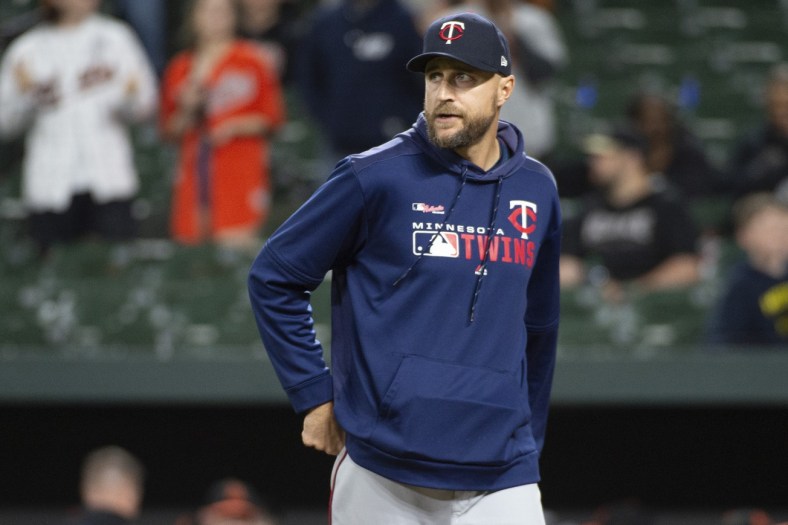
Don’t look now, but the Minnesota Twins have baseball’s best record.
It seems unlikely in retrospect. The Twins finished with 78 wins last year. They fired manager Paul Molitor and watched future Hall of Famer Joe Mauer retire last offseason. Yet, somehow, they’re the best team in baseball as we inch toward the season’s midway point.
It seems every year in the MLB there’s a team or two that peaks too early, building an unlikely lead in their division and crashing before the calendar reaches October. Last year, the Arizona Diamondbacks spent a National League-best 125 days in leading their division before bottoming out and missing the postseason. Apparently built on smoke and mirrors, those DBacks collapsed when it mattered.
The big picture: These Twins aren’t going too fast, too soon. They’re legit.
In with the new: The Twins’ choice to replace Molitor — a Hall of Fame player who won the Manager of the Year award in 2017 — with Rocco Baldelli represents a complete change in thinking and style. Molitor was a manager of yesterday, and in explaining the manager’s firing, Chief Baseball Officer Derek Falvey cited a youth movement.
In Baldelli, the Twins got a 37-year old guy with no managing experience. So far, it’s paid off.
- New era: Baldelli is the first millennial to manage an MLB team, and he’s younger than Twins’ DH Nelson Cruz. The Twins hired Baldelli in part to connect with a group of young players that his predecessor couldn’t, and so far he has succeeded.
- Communication: Baldelli has made it clear that communication is one of his greater strengths. One of the first things he did this offseason as manager was travel to Georgia and the Dominican Republic to connect with young stars Byron Buxton and Miguel Sano.
- In his own words: “The fact that you make time to talk to someone sometimes means a lot more than what’s said,” Baldelli told USA Today. “Two people coming together and spending time with each other means a lot in and of itself.”
On the offensive: Perhaps the most tangible explanation to Minnesota’s newfound success lies in the offense. The Twins, put simply, are hitting the screws off the ball. They rank second in the MLB in both slugging percentage and OPS behind the Houston Astros, in large part due to a balanced attack.
- Starting 9: Despite having just one qualified player hitting above .300, the Twins are second in the MLB in batting average, trailing Houston, according to MLB.com. Jorge Polanco is leading the way, while guys like Byron Buxton and offseason acquisition Jonathon Schoop are pulling their weight with averages above .270.
- Power: Minnesota sits second in the league in home run total with 90 on the season (through May 21). Eddie Rosario is leading the club with 13 long-balls to date, but the Twins’ power surge has mostly been a team effort.
- Getting better: The Twins have managed to put up impressive offensive numbers without slugger Miguel Sano for much of the year. After missing the club’s first 41 games, he went 2-for-5 with two doubles in his return. The best team in baseball just got better.
Getting it done on the mound: Minnesota’s offense has driven the team’s surprise season, but their rotation and bullpen have been getting it done, too. The club sits eighth in the MLB with a 3.82 ERA, but that doesn’t tell the whole story.
- Starting right: Minnesota’s starters have pitched well so far, despite general bad performances from Michael Pineda.
- Staff ace: Jake Odorizzi has been brilliant for the staff, pitching to the tune of a 2.38 ERA in 53 innings to go along with 52 strikeouts.
- The other guys: Jose Berrios and Martin Perez have been an excellent two-three punch behind Odorizzi in the Twins’ rotation. Kyle Gibson has been a serviceable No. 4, as well.
How they could get better: They lead the league in wins, sure, but Minnesota should always be looking to get better, and they’re in a unique situation to do so.
The Twins have just $20 million on the books for the 2020 season, though that figure doesn’t account for arbitration-eligible players. The point remains, though, that Minnesota’s financial flexibility to add a few free agents that remain unsigned.
- Former ace: 2015 AL Cy Young winner Dallas Keuchel remains unsigned despite posting a 3.37 ERA over the last four seasons. The free agent told USA Today earlier in May that his decision to wait for a sizeable contract offer isn’t for him, but “for principle.”
- Bullpen help: In a similar boat as Keuchel sits All-Star closer Craig Kimbrel. He has dropped his asking price to a deal similar to those of Wade Davis and Zack Britton and could fit nicely with the Twins.
- Trade market: If the Twins are still in the playoff race as the July 31 trade deadline rolls around — and they should be — they’ll more than likely look to bolster their roster with an acquisition or two. Someone like Texas Rangers starter Mike Minor could be exactly who Minnesota needs to make a deep playoff run.
Final thoughts: If the Twins want to make a serious run for the AL Pennant, they need to win the AL Central. So far, it looks to be their division to lose, with only the Indians and White Sox anywhere near striking distance. They’re going to have to keep hitting, of course, and will probably need to add some pitching depth at the deadline, but for the most part, the Twins look like the real deal.
Miguel Sano’s triumphant return should serve as a shot in the arm for a team that didn’t really need one. He’s the type of player that could carry a team in October if he gets hot — now, the Twins just have to get there.